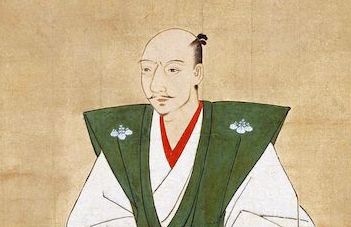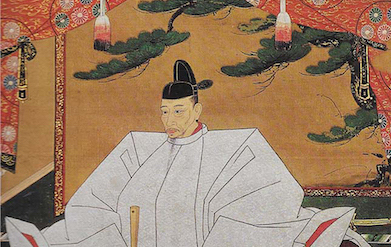
英語で説明する【豊臣秀吉】 に続き、今回は江戸幕府初代将軍、徳川家康を英語で簡単に説明する表現をご紹介していきます。
ご興味のある方は、当サイトで 英語クイズ(5000問) を出題しておりますので是非ご覧ください。
目次

概要
Tokugawa Ieyasu was the founder and first shōgun of the Tokugawa, or Edo, Shogunate of Japan, which ruled Japan from 1603 until the Meiji Restoration in 1868.
(徳川家康は、1603年から1868年の明治維新まで日本を統治した江戸幕府の創設者であり、最初の将軍でした。)
The Tokugawa shogunate of Japan, also known as the Tokugawa Bafuku and Edo Bafuku, was the last feudal Japanese military government.
(江戸幕府としても知られる日本の徳川幕府は、封建時代最後の軍事政権でした。)
He established the government in Edo in 1603. It lasted for 265 years until 1868, with fifteen Shoguns.
(彼は1603年に江戸に幕府を開きました。幕府は、15代の将軍で1868年まで265年続きました。)
・founder:創設者、創立者、設立者、発起人、(宗教などの) 開祖
・establish:(組織・体制・事業などを) 設立する、創立する、(法律・制度などを) 制定する
三河国統一まで
The eldest son of Matsudaira Hirotada, the lord of Okazaki-jo Castle in Mikawa province, Tokugawa Ieyasu was born in 1542 in what is now Aichi prefecture.
(三河岡崎城主、松平広忠の長男として、徳川家康は1542年に愛知県で生まれました。)
At the time of his birth, Japan was convulsed by civil war and there were violent feuds between territorial lords.
(彼が生まれた頃、日本は内戦によって混乱し、領主間の激しい争いがありました。)
Growing up in a time of chaotic military conflict, Ieyasu was sent as a hostage at four years old to cement a Matsudaira alliance with the neighboring Imagawa clan.
(混沌とした軍事紛争の時代に育った家康は、4歳の時に彼の氏族と隣接する今川氏族との同盟を確保するために人質として送られました。)
After Imagawa Yoshimoto was defeated by Oda Nobunaga in the Battle of Okehazama in 1560, Ieyasu became free at last, and he immediately allied with Nobunaga, unifying Mikawa province.
(1560年に桶狭間の戦いで今川義元が織田信長に敗れると、家康はようやく人質から解放され、すぐに信長と手を結び、三河国を統一しました。)
・lord:❶高位の貴族 ❷(封建時代の)領主、地主、荘園主
・prefecture:(フランス・イタリア・日本などにおける) 行政区、県、都 など
・convulse:【自動詞】身悶えする、痙攣する /【他動詞】激しく揺さぶる、(国会・社会などを) 動揺させる
・feud:(特に一族・グループ同士などの長期にわたる) 争い、確執
・hostage:人質、人質状態
・alliance:同盟、提携
・defeat:【名詞】敗北、(計画などの) 失敗 /【他動詞】(試合・戦争などで) 相手を破る、うち負かす
・ally:【名詞】❶(戦争における) 同盟国 ❷協力者、味方 /【自動詞】(with, to) 〜と同盟する、協力する
・province:❶(行政区画としての) 州、省 ❷(昔の日本の) 国 ❸(学問・活動などの) 専門分野
三方ヶ原の戦い
In 1572, Ieyasu was defeated by Takeda Shingen in the Battle of Mikatagahara, and it was the only battle that Ieyasu lost in his life. However, in 1582, he and Nobunaga defeated the Takeda family.
(1572年、武田信玄との三方ヶ原の戦いにおいて、生涯唯一の敗北を喫しましたが、1582年には信長とともに武田氏を滅ぼしました。)
Ieyasu was on bad terms with Hideyoshi for a while, but Ieyasu came to serve him because Hideyoshi asked him to do so.
(家康は、一時期秀吉と対立したものの、秀吉に求められて臣従することになります。)
・defeat:【名詞】敗北、(計画などの) 失敗 /【他動詞】(試合・戦争などで) 相手を破る、うち負かす
・be on bad terms with:不仲である、不和である、仲たがいしている
江戸城建設
On Hideyoshi’s recommendation, Ieyasu moved his military headquarters to Edo (now Tokyo) in 1590 and began construction on a castle.
(1590年に秀吉の勧めで軍事の本拠地を江戸に移し、城の建設を始めました。)
As a result, thousands of his vassals moved there, and the population of the town exploded.
(その結果、彼の家臣数千人がそこに移動し、街の人口は爆発的に増加しました。)
After Hideyoshi’s death resulted in a power struggle among the daimyo, the ambitious chief of “Go-tairo” (the Council of Five Elders), Ieyasu, hoping to assume power over the entire regime, became the rival of the chief of “Go-bugyo” (the Five Commissioners), Ishida Mitsunari.
(秀吉の死後、大名たちの間で権力闘争が起こり、五大老筆頭で全政権を狙う家康と豊臣政権を守る五奉行筆頭の石田三成と対立しました。)
・headquarters:(組織・軍隊・警察などの) 本部、司令部、本署
・construction:❶建設、建造 ❷(理論・体系などの) 構成、組み立て ❸(かたく) 解釈、意味
・vassal:(封建時代の) 家臣、臣下、召使い
・explode:❶(火薬・ガス・タンクなどが) 爆発する、破裂する ❷(人口などが) 急激に増大する ❸(人が、感情などを) あらわにする
・struggle:【自動詞】苦闘する、困難に打ち勝つために懸命に努力する /【名詞】闘争、戦い
・assume:❶仮定する、(証拠はないが) 当然とみなす ❷(理論・考えなどが) 〜を前提とする ❸(かたく) 実権を握る
・regime:(通例非難して) 政権、政府、政治体制
関ヶ原の戦い
This rivalry between the Ieyasu and Mitsunari factions developed into an enormous war, the Eastern Army led by Ieyasu and the Western Army led by Mitsunari collided in Sekigahara in 1600.
(この対立は戦争へと発展し、1600年に家康率いる東軍と三成率いる西軍は関ヶ原で激突しました。)
This is called “the Battle of Sekigahara,” known as the Realm Divide.
(これを天下分け目の「関ヶ原の戦い」といいます。)
・rivalry:対抗意識、競争、張り合い
・faction:(政党内部などの) 派閥、党派、対立グループ
・develop:❶発達する、発展させる ❷開発する、制作する ❸病気になる ❹(性質・嗜好・感情・評判などを) 持つようになる、だんだんと〜になる
・lead:案内する、先導する、導く、率いる
・collide:(移動しているものが) 互いに正面衝突する
江戸幕府初代将軍
In 1603, Ieyasu was appointed “Seii-taishōgun” (Barbarian Subduing General) by the Court, and he set up the Edo Bakufu (Shogunate).
(1603年、家康は朝廷から征夷大将軍に任命され、江戸幕府を開きました。)
He set out some of his loyal retainers as daimyo, expanded Edo-jo Castle, reclaimed land from the sea, and developed the city structure of Edo.
(彼は忠誠心の厚い大名を全国に配置し、江戸城を拡大し、海を埋め立てて江戸の街を整備しました。)
In 1605, he passed the title of shogun on to his son, Hidetada, and continued to strengthen his hold on power until his death in 1616.
(1605年、彼は息子の秀忠に将軍の座を譲り、1616年に亡くなるまで、権力の保持を強化し続けました。)
・appoint:(正式に、要職に) 任命する、指名する
・develop:❶発達する、発展させる ❷開発する、制作する ❸病気になる ❹(性質・嗜好・感情・評判などを) 持つようになる、だんだんと〜になる
・expand:❶(大きさ・数・重要性の点で) ふくらませる、膨張させる ❷(事業・経済・システムなどを) 拡大する、発展させる
・reclaim:❶(金銭・持ち物などの) 返還を請求する ❷(森林・沼地などを) 開拓する、干拓する
ホトトギスの例え
信長、秀吉、家康のそれぞれの性格を表して、「ホトトギスが鳴かなかったらどうするか」という有名な俳句があります。
The three most powerful warlords of the Sengoku period, Oda Nobunaga, Toyotomi Hideyoshi and Tokugawa Ieyasu, all had very different characters.
(戦国時代の最も強力な3人の武将、織田信長、豊臣秀吉そして徳川家康は皆全く異なる性格を持っていました。)
Their personalities are contrasted by the following parable.
(彼らの性格は、以下の例えで対照をなしています。)
◆ Oda Nobunaga
If a bird doesn’t sing, kill it.
(鳴かぬなら 殺してしまえ ホトトギス)
◆ Toyotomi Hideyoshi
If a bird doesn’t sing, make it.
(鳴かぬなら 鳴かせて見せよう ホトトギス)
◆ Tokugawa Ieyasu
If a bird doesn’t sing, wait for it.
(鳴かぬなら 鳴くまで待とう ホトトギス)




